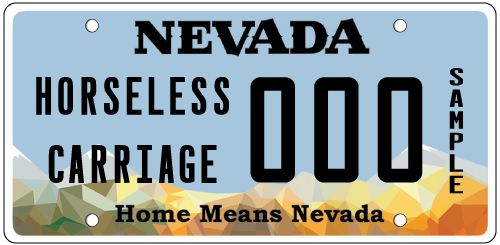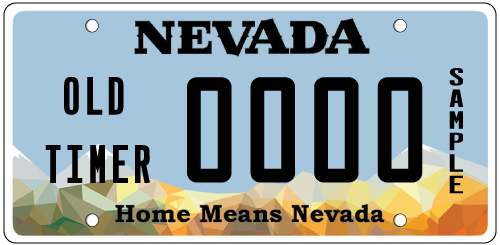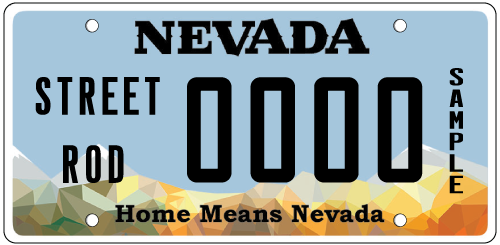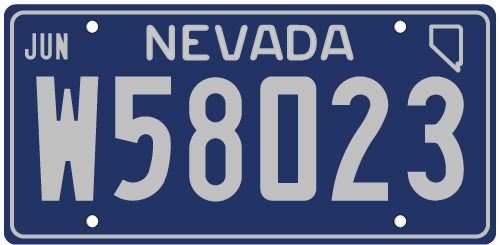Nevada requires emissions testing on vehicles registered in the urban areas of Clark County (Las Vegas) and Washoe County (Reno) before the vehicle can be registered or its is registration renewed.
Diesel Vehicles:
Diesel vehicles with a GVWR of 14,000 or less must undergo emissions testing, but are provided with the same exemptions provided to gasoline powered vehicles.
Exemptions:
1. New vehicles for their first and second registration
2. New hybrid-electric vehicles for the first 5 model years
2. Pre-1968 model year vehicles
3. Vehicles based in remote areas of Clark and Washoe counties and all other Nevada counties
4. Alternative fuel vehicles.
5. Vehicles registered as a Classic Rod, Classic Vehicle or Old Timer and driven 5,000 miles or less per year.
6. Vehicles registered as a Replica Vehicle.
For more information visit: http://www.dmvnv.com/
Nevada Revised Statutes
§ 484D.415 Mufflers: Prevention of emissions.
1. Every motor vehicle shall at all times be equipped with a muffler in good working order and in constant operation to prevent emissions greater than those allowed by rules and regulations established by the Department. No person shall use a muffler cutout, bypass or similar device upon a motor vehicle on a highway.
2. The engine and power mechanism of every motor vehicle shall be so equipped and adjusted as to prevent the escape of excessive fumes or smoke.

Classic Vehicle
Available for vehicles that are at least 25 years old that have not been customized.

Classic Rod
Available for vehicles that are at least 20 years old and manufactured after 1949.

Horseless Carriage
Available for vehicles manufactured in 1915 or earlier. Applications for horseless carriage plates must be approved by the Horseless Carriage Club of Nevada.

Old Timer
Available for vehicles that are more than 40 years old.

Retired Military Vehicle
Available for any vehicle or trailer, regardless of size, weight or year of manufacture, that was manufactured for use in the military forces of any country and is maintained to depict or represent military design or markings. The term includes, without limitation, armored vehicles, passenger cars, half-track vehicles, motorcycles, pick-up trucks, sport utility vehicles, tracked vehicles, trailers, trucks and truck-tractors. It must not be used for general transportation but may be used for exhibitions, parades, charitable events, fundraisers or similar activities, must be safe to be operated on the highways of this State; and be at least 20 years old on the date on which the owner of the retired military vehicle applies for license plates.

Street Rod
Available for vehicles manufactured before 1949 that have been customized.

YOM
Available for vehicles manufactured in 1961 and older with DMV approval.
Definitions
Antique Truck. Trucks at least 25 years old, larger than one ton and used only in shows, parades or similar activities.
Antique Vehicle: Horseless Carriage. An antique motor vehicle which is a model manufactured during or before 1915.
Antique Vehicle: Old Timer. Any motor vehicle which is a model manufactured more than 40 years before the date of application for registration.
Classic Rod. Any passenger car or light commercial vehicle:
(a) Having a manufacturer's rated carrying capacity of 1 ton or less; and
(b) Manufactured not earlier than 1949, but at least 20 years before the application is submitted to the Department.
Classic Vehicle. Any passenger car or light commercial vehicle:
(a) Having a manufacturer's rated carrying capacity of 1 ton or less;
(b) Manufactured at least 25 years before the application is submitted to the Department; and
c) Containing only the original parts which were used to manufacture the vehicle or replacement parts that duplicate those original parts.
Rebuilt Vehicle. A vehicle:
(a) That is a salvage vehicle as that term is defined in NRS 487.770, excluding a nonrepairable vehicle; or
(b) One or more major components of which have been replaced as set forth in this subsection. For the purposes of this subsection, the requisite major components of a vehicle which must be replaced for a vehicle to be considered rebuilt are the:
(1) Cowl assembly;
(2) Rear clip assembly;
(3) Roof assembly;
(4) Floor pan assembly;
(5) Conventional frame coupled with one additional major component; or
(6) Complete front inner structure for a unibody.
The term does not include a vehicle for which the only change is the installation of a truck cab assembly.
Replica Vehicle. Any passenger car or light-duty motor vehicle which:
(1) Has a body manufactured after 1967 which is made to resemble a vehicle of a model manufactured before 1968;
(2) Has been altered from the original design of the manufacturer or has a body constructed from materials which are not original to the vehicle;
(3) Is maintained solely for occasional transportation, including exhibitions, club activities, parades, tours or other similar uses; and
(4) Is not used for daily transportation. The term does not include a vehicle which has been restored to its original design by replacing parts.
Reconstructed Vehicle. Any vehicle which shall have been assembled or constructed largely by means of essential parts, new or used, derived from other vehicles or makes of vehicles of various names, models or types, or which, if originally otherwise constructed, shall have been materially altered by the removal of essential parts or by the addition or substitution of essential parts, new or used, derived from other vehicles or makes of vehicles.
Specially Constructed Vehicle. Any vehicle which shall not have been originally constructed under a distinctive name, make, model or type by a generally recognized manufacturer of vehicles.
Street Rod. Any passenger car or light commercial vehicle:
(a) Having a manufacturer's rated carrying capacity of 1 ton or less; and
(b) Manufactured not later than 1948.
Rebuilder. A person engaged in the:
(a) Business of reconstructing motor vehicles by the alteration, addition or substitution of substantial or essential parts; or
(b) Assembling of replica or specially constructed vehicles from unassembled parts
